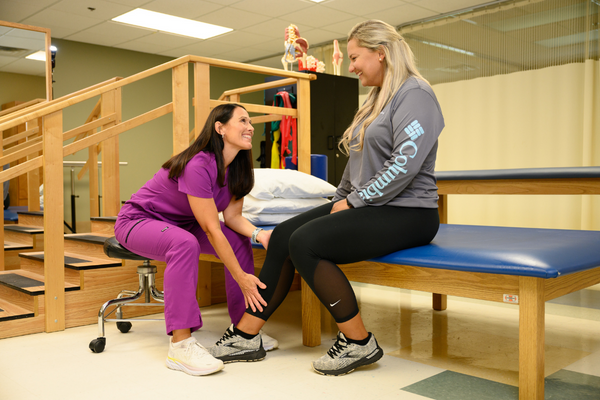For some patients, physician rehabilitation is an important step toward recovery after an illness or injury. For others, it’s a tool that can help them gain skills, functional movement and confidence in their daily lives. Rehabilitation is a broad term and encompasses several types of therapy and many different patient needs. Here are the three main types of physical rehabilitation: physical, occupational and speech, and what you need to know about each one.
Physical Therapy
Physical therapy helps those with limited or painful functional movement, often after an injury. Most patients require physical therapy because certain movements are limited or painful. Other situations that require physical therapy include arthritis or stroke.
In physical therapy, a patient is first evaluated to assess their pain levels, any limitations to their movement and other concerns. Next, the therapist will implement a plan including exercise, treatments and other strategies to help the patient improve. This may involve therapeutic exercises, heat and ice. Some of the work happens in the doctor’s office, hospital or other medical setting, but most patients are also given instructions for exercises they can do at home.
The primary goal of physical rehabilitation is to help each patient regain as much strength and independence as possible, but goals will differ depending on the person.
Occupational Therapy
Patients who benefit from occupational therapy include people with injuries, chronic illnesses or sensory processing disorders. While sometimes confused with physical therapy due to the similar treatment involved, health care providers implement occupational therapy with a different goal in mind. Physical therapy aims to improve general movement and function, while occupational therapy helps patients regain the ability to do certain occupations. An “occupation” can be anything that is part of daily life for a patient: walking to get the mail, brushing their teeth, pushing a shopping cart or even making dinner.
A therapist evaluates each patient and then creates a custom treatment plan. They help each patient find tools, implement strategies and perform exercises to work toward performing those specific daily activities. Just as with physical therapy, they tailor goals to the needs of the individual patient.
Speech Therapy
Speech therapy helps those with communication problems or speech disorders. Some patients require it due to speech impairments or disorders from an early age, while others benefit after a traumatic event, such as an injury or stroke, which has affected their speech.
Speech therapists treat patients of many different ages, from children to adults. Type of treatment may involve breathing exercises, memory challenges and exercises specifically designed to target oral muscles. For younger patients, treatment plans may include oral exercises as well as games and books.
Like occupational therapy, speech therapy can help patients work toward specific goals to enhance the quality of their daily life.
Care Right Where You Need It
While different in treatment, each of these types of physical rehabilitation share a common goal: helping patients gain skills, independence and confidence. ACV Health, an outreach of Advent Christian Village, is proud to offer all three types of rehabilitation to our patients under one convenient roof.
Our mission is to provide comprehensive medical care in a convenient and welcoming environment, including the rehabilitation care you need, right where you need it. We’re also proud to be home to the only occupational therapist in the area. Click here to request an appointment at ACV Health today.
This blog is not intended as medical advice. If you have questions regarding physical, occupational or speech therapy, please speak with your doctor.




